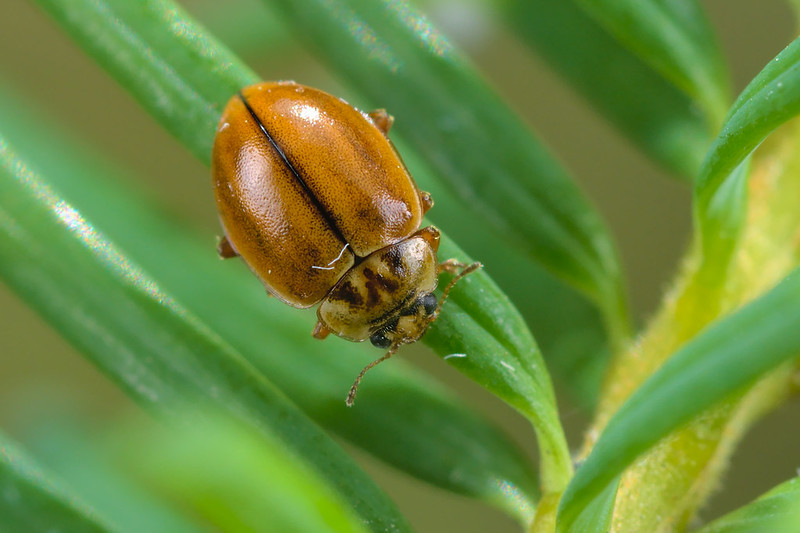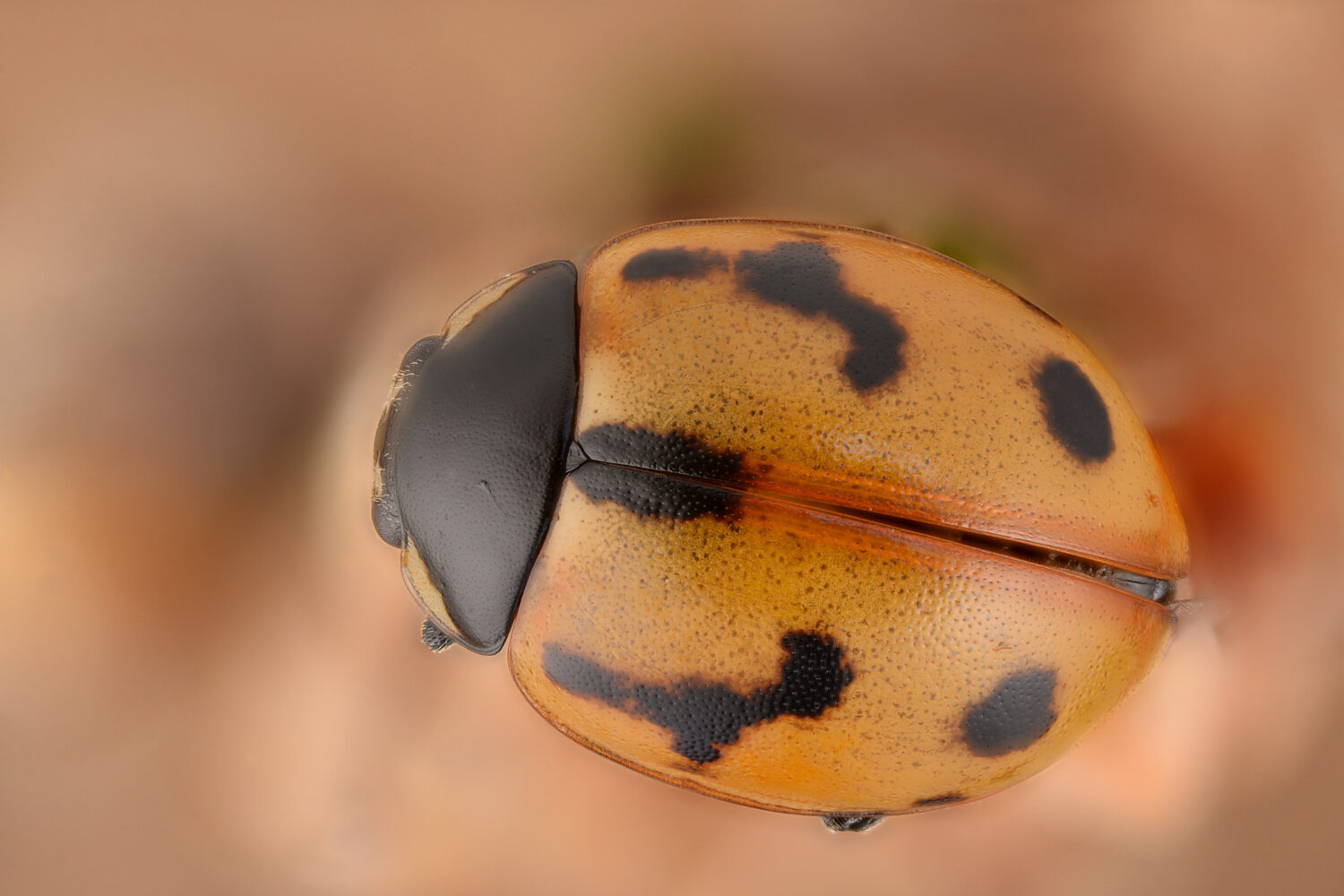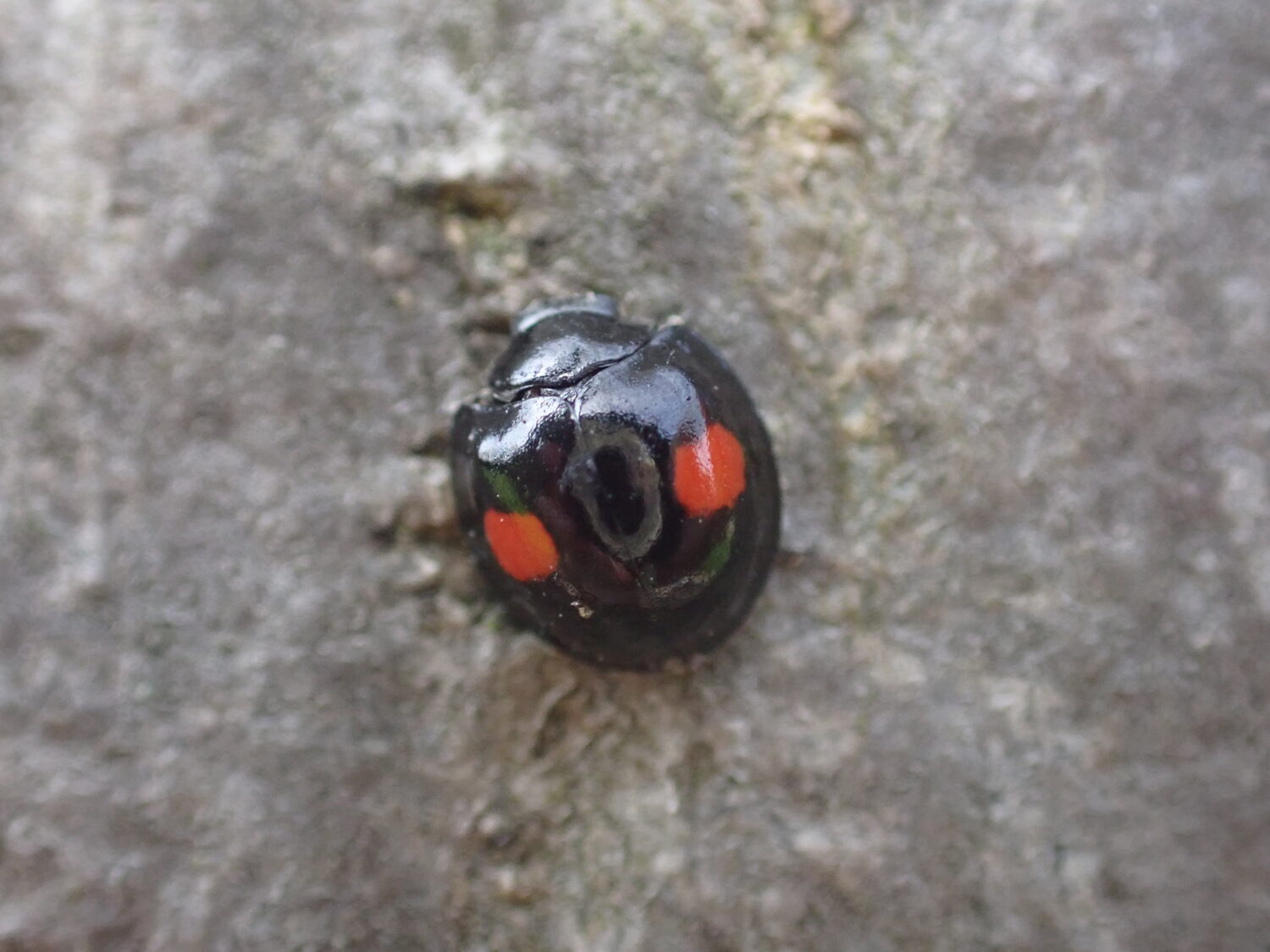Take a closer look at the specialist ladybirds that you could spot in the North East with naturalist, Charlotte Rankin.
While some ladybird species can be found in a variety of habitats and on a variety of plants, some ladybirds are very specialist in their habits. There are a number of ladybirds associated with conifers, but also shingle, heathland and wetland. Here are three specialist ladybirds you can find in the North East.
If you find one while exploring their habitat, please do share your record with the North East Ladybird Spot, and improve our understanding of these under-recorded ladybirds in the North East.

Water Ladybird
A wetland specialist, the Water Ladybird is typically found on the leaves and stems of Reed, and wetland grasses. It feeds on aphids associated with Reed, Bulrush and Reed Sweet-grass. Look out for this ladybird along the edges of ponds and lakes.
Typically with 19 black spots, the colour of the wings cases varies from beige to red. When adults disperse in spring, their wing cases turn to the warning colour of red. This ladybird is distinctly elongate and flattened in shape.
In winter, the Water Ladybird can be found overwintering within Reed and Bulrush.

Larch Ladybird
A conifer specialist, the Larch Ladybird is commonly found in coniferous or mixed woodland. It is commonly found on Larch trees, but also Norway Spruce and Douglas Fir.
Plain in appearance compared to other ladybirds, the Larch Ladybird is brown, often with a dark line running down the centre. As a result, it is often well camouflaged and harder to spot.
It feeds primarily on a group of conifer-feeding bugs, known as adelgids. In winter, it can be found overwintering under the bark of Larch, Spruce and Douglas Fir.

Hieroglyphic Ladybird
A heathland specialist, the Hieroglyphic Ladybird can be found in heathland and acid grassland, usually on older heather plants. This ladybird feeds mainly on the larvae of the Heather Leaf Beetle, other leaf beetles, and the Heather Aphid.
As its name suggests, this ladybird often has a mark that resembles an Egyptian hieroglyph. Its typical form is bronze brown with black stripes or spots. However, it can also be black with brown markings, or completely black.
In winter, it can be found hidden in litter under Heather and Gorse.

Join the North East Ladybird Spot
Urban or rural, beginner or expert, we need your help to record ladybirds across the North East this spring and summer.
Your records can add to our understanding of ladybirds in the region and inform conservation and monitoring efforts.
Taking part is easy and every record counts, wherever you live in the region. Records of all bee species are encouraged.